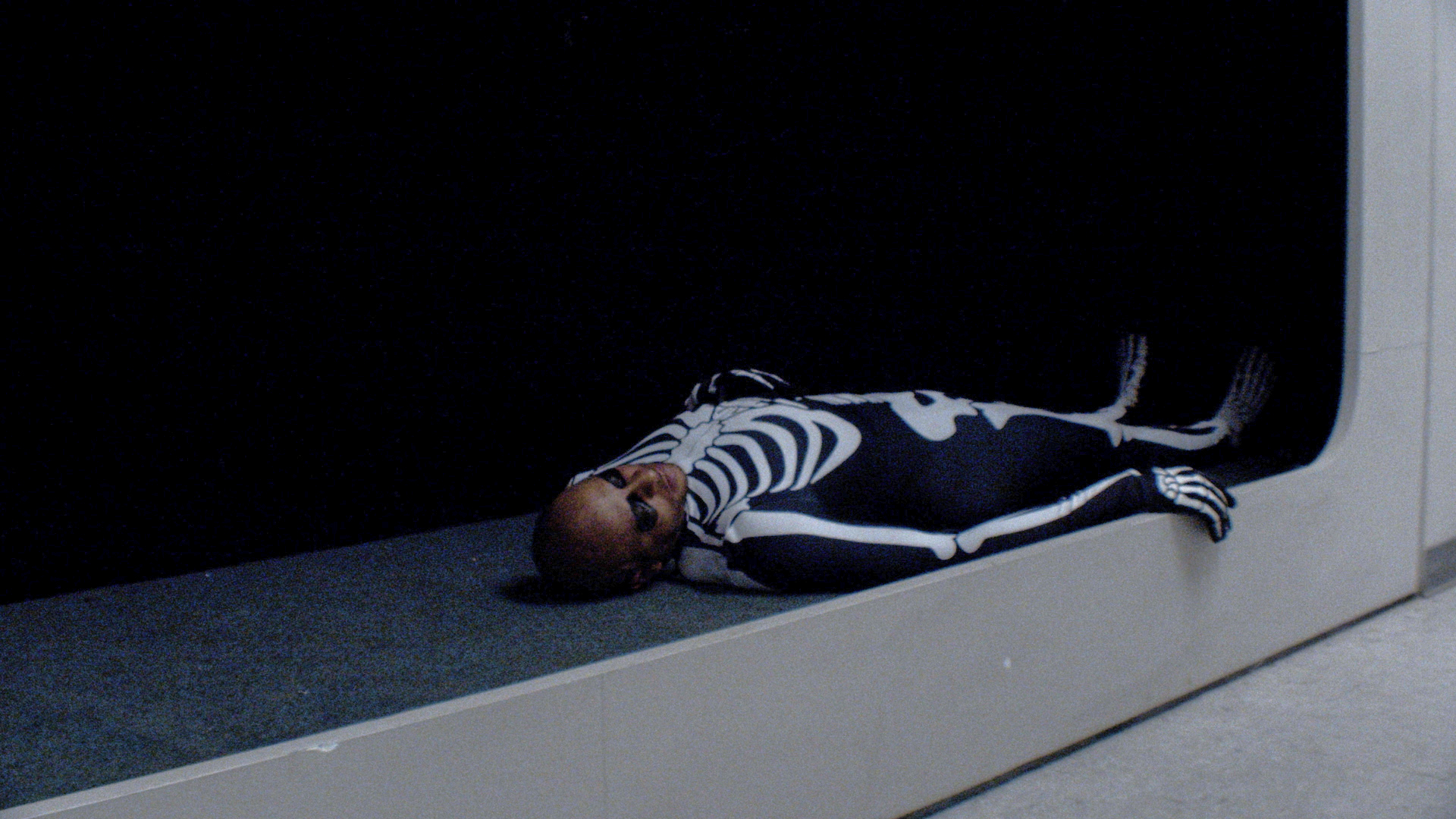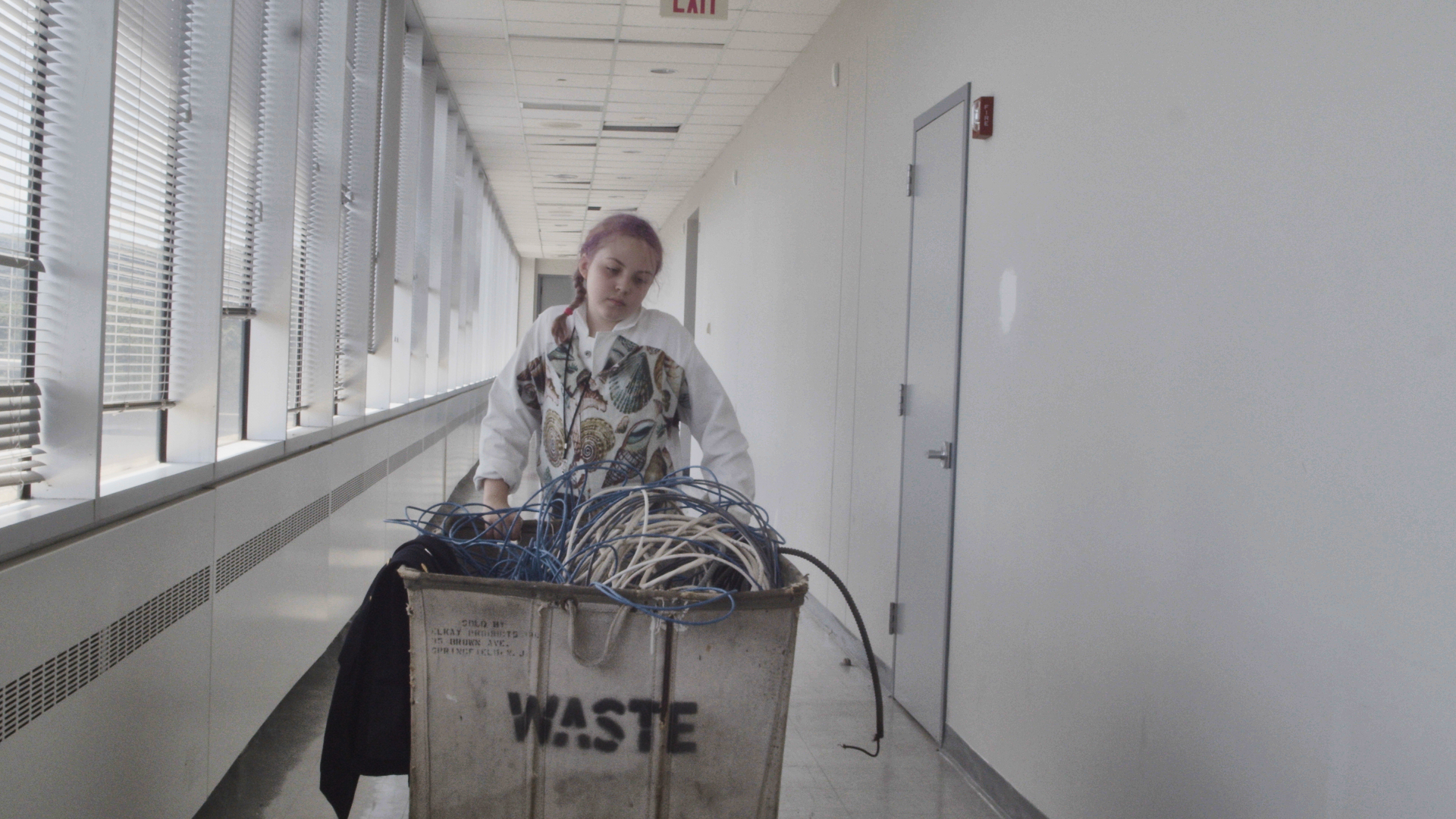A.K. Burns’s complete Negative Space cycle is now on view at the Wexner

A.K. Burns’s largest solo exhibition to date, Of space we are… at the Wexner Center for the Arts, considers the intersection between the human, more-than-human, and the environment—and the value systems that guide our perceptions of each. The centerpiece of the exhibition is the science-fiction epic Negative Space, for which Burns received the Creative Capital Award in 2015.
Curatorial intern Cole J. Graham wrote about Negative Space for the exhibition gallery guide, which has been republished below.
 |
 |
Video stills from What is Perverse is Liquid (NS0000), 2022.
Gathering Breaks
by Cole J. Graham
A nonnarrative science-fiction epic told across four videos and their corresponding installations, A.K. Burns’s Negative Space is oriented by an ethic of play: a subterranean game played through the artist’s relation to fantasy. The fantastical is, for the artist, just to the left of center: outside what we know and recognize and pressing against what we accept as a given. In the void—that is, space in the negative, the space existing outside of and around claimed space—anything could become. Yet it would be too easy to assert that the fantastical is inherently queer; Burns’s works are, rather, entangled with real and current events.
The void’s potential lies in the metaphors that fill it—and so, as we build our worlds, we are asked to interrogate fantasy itself. Whose fantasies are these? Whom do they serve? Fantastical world-building, as Burns understands it, cannot remain fantastical. We might, therefore, approach Burns’s work with the mindset of a cartographer-spelunker, faulty flashlight in hand. The dark is bursting at its ontological seams; what you don’t see matters as much as what you do. In the flickering light, the gray mush of our brains fills in the gaps; it is up to us to look beyond normalizing and beyond hierarchies of value. In the best-case scenario, we will (re)make what we perceive and perceive what we (re)make.
In navigating Burns’s Negative Space, we must therefore learn to welcome the tetralogy’s radical efforts at (re)orientation and to accept its simultaneous operation as organizing device and uncontained sprawl. Emptiness is not empty; pure potential holds volume. This is, however, not archaeology: digging, cutting, cauterizing, and categorizing. Land and space are imbued with humanlike agency such that we might recognize the protagonist-as-site rather than protagonist-as-person. Space, for Burns, is not simply taking up space; it resists occupation. But this is not an unfriendly resistance: in Negative Space’s episodic wanderings, space opens up to greet us—it offers a place of contemplation and repose.
Burns often speaks of the “seduction of cinema.” One aspect of that seduction must be the invitation to stay. And what is at stake in that invitation if not intimacy—however restful and restless, active and actualizing? Our time with Burns’s work is not the rest of the dead or inert. Rather, in sitting with the work, we continue, we breathe, our chests still expand. This mode of being—observing and questioning potential futures—makes us all complicit, makes us all the artist’s coconspirators in an act of resistance that accumulates and is ongoing. Here gather the breaks that let us hang in the in-between. Where (or when) we enter (or leave) is less important than the fact that we were there. And when we return, though nothing will have waited for us, it will be like we never left.
Cole J. Graham is a PhD student in History of Art at the Ohio State University.
Of space we are… is on view at the Wexner Center for the Arts from February 11–July 9, 2023. Tickets and more information here.








